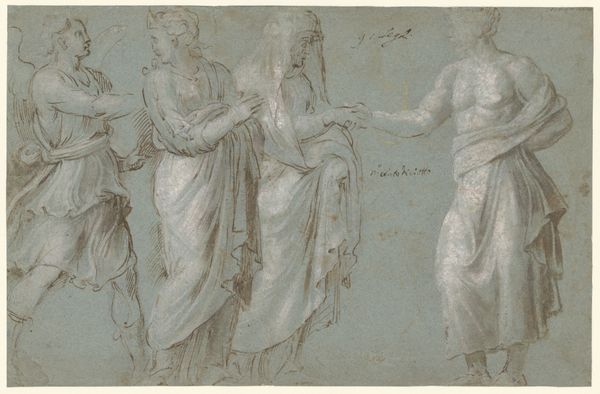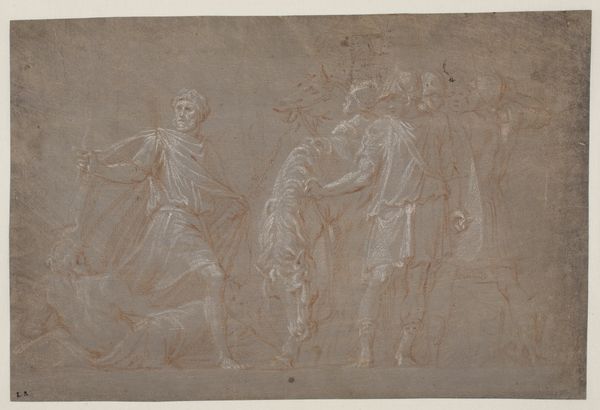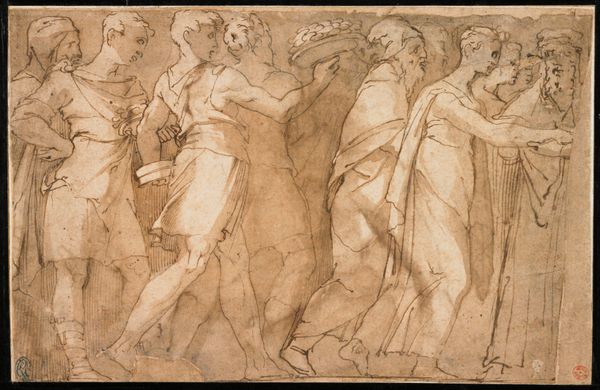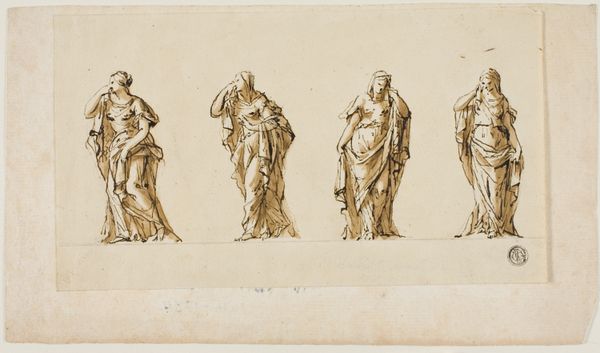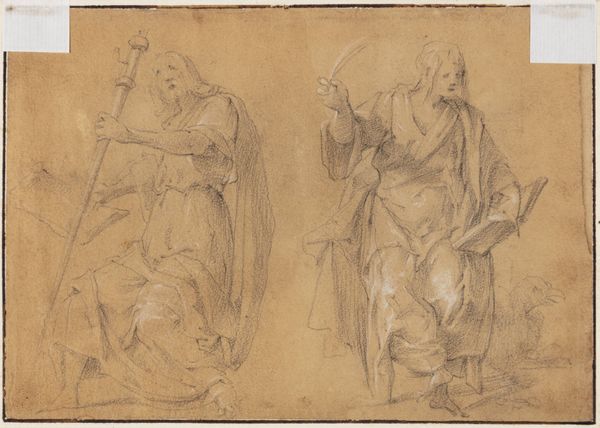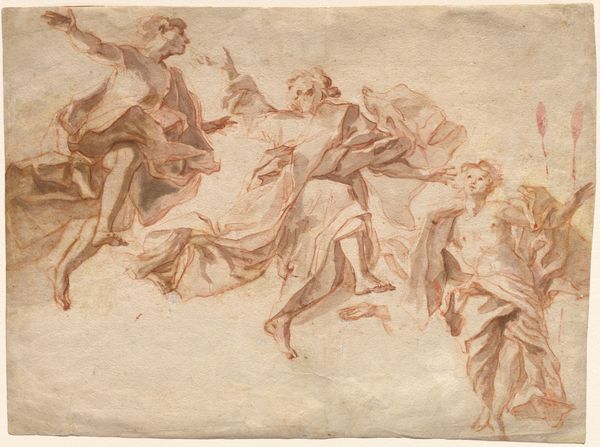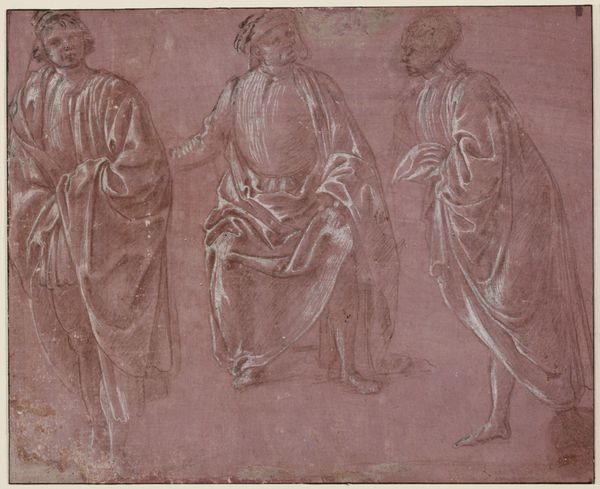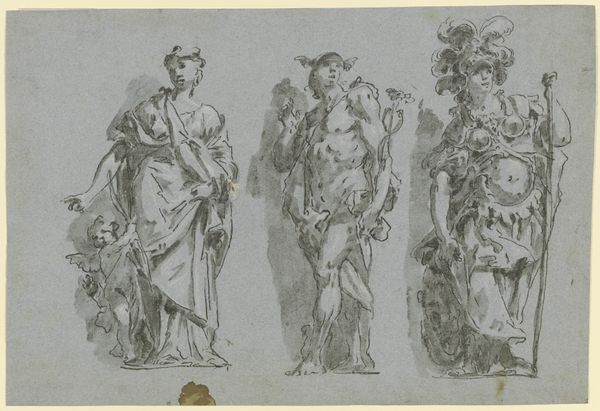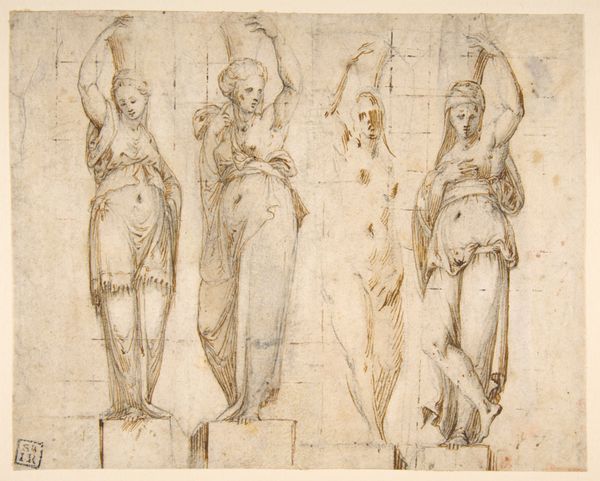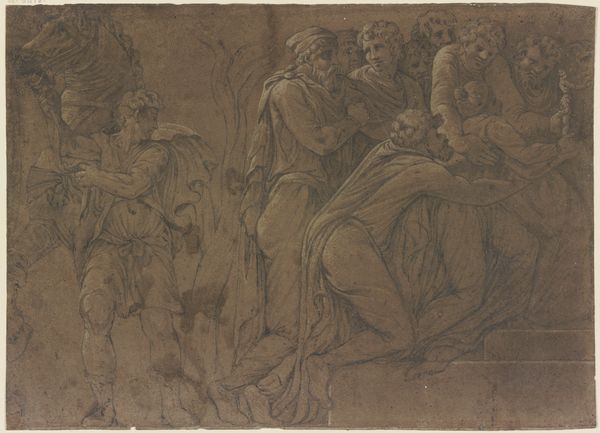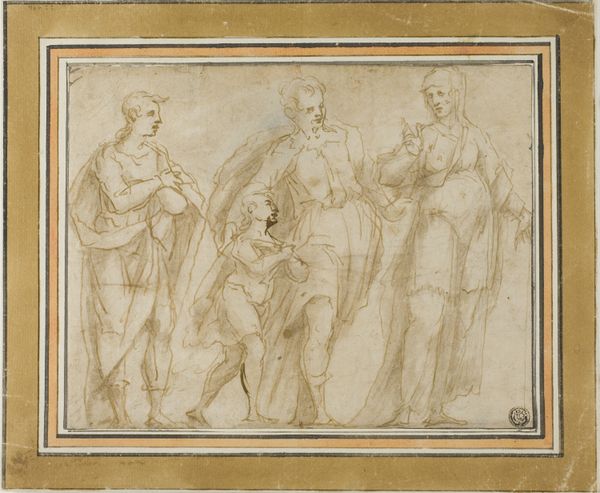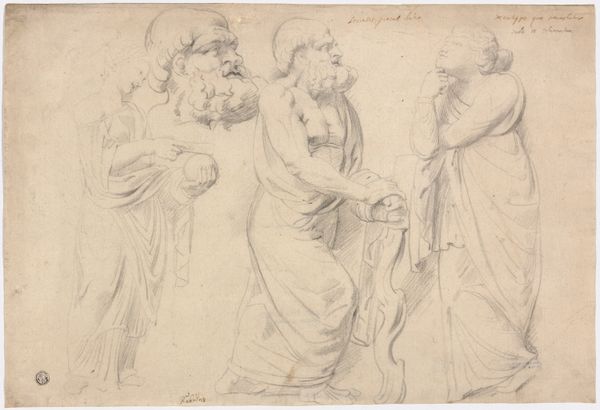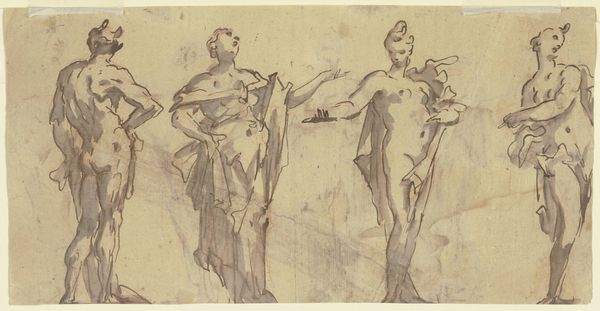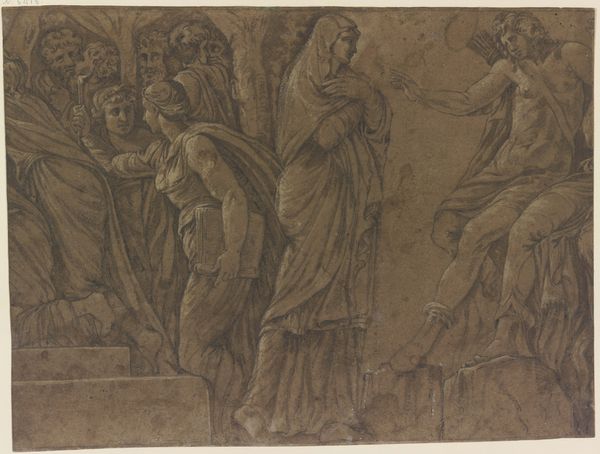
drawing, print
#
drawing
#
natural stone pattern
#
toned paper
# print
#
charcoal drawing
#
possibly oil pastel
#
charcoal art
#
oil painting
#
earthy tone
#
coffee painting
#
underpainting
#
men
#
watercolor
Dimensions: 17 1/8 x 12 in. (43.5 x 30.5 cm)
Copyright: Public Domain
Editor: We're looking at "Three Standing Figures", a 16th-century drawing by Francesco Primaticcio, housed here at the Metropolitan Museum. I’m struck by how monumental these figures feel, even though it’s just a drawing. They have a real weight and presence. What do you see in this piece, particularly considering its historical context? Curator: Well, these aren't just figures; they're demonstrations of power and influence through the language of art. Primaticcio was a key figure in the School of Fontainebleau, heavily influencing French Mannerism. Consider the intended audience: fellow artists and, likely, court patrons. These drawings functioned as a kind of visual diplomacy, demonstrating the artist's skill and, by extension, the cultural sophistication of the court he served. Do you see how their draped clothing communicates nobility? Editor: Yes, the clothing drapes and almost overwhelms them. Is that meant to enhance their status even further? Curator: Exactly. It's not merely clothing; it's a visual representation of authority. Notice how the drapery’s heavy folds and stylized rendering also highlight the artist's virtuosity in rendering form and texture. These weren’t public artworks in the way we think of art today; they were tools for navigating social and political landscapes. The commission, the display, everything spoke to power dynamics. What are your thoughts about the public's engagement? Editor: That makes me think about how different it is to see this in a museum now, so removed from its original context. We see it as art, whereas back then it was a complex social tool. Curator: Precisely. Museums change the power dynamic. We flatten the historical nuance when we exhibit works divorced from their original settings. Reflecting on this piece highlights the vital role of historical context when interpreting artistic intent and impact. Editor: Definitely given me a new way to consider the role art plays. I will always look for the art behind the "art." Curator: And for that, museums can act as wonderful launching pads.
Comments
No comments
Be the first to comment and join the conversation on the ultimate creative platform.
